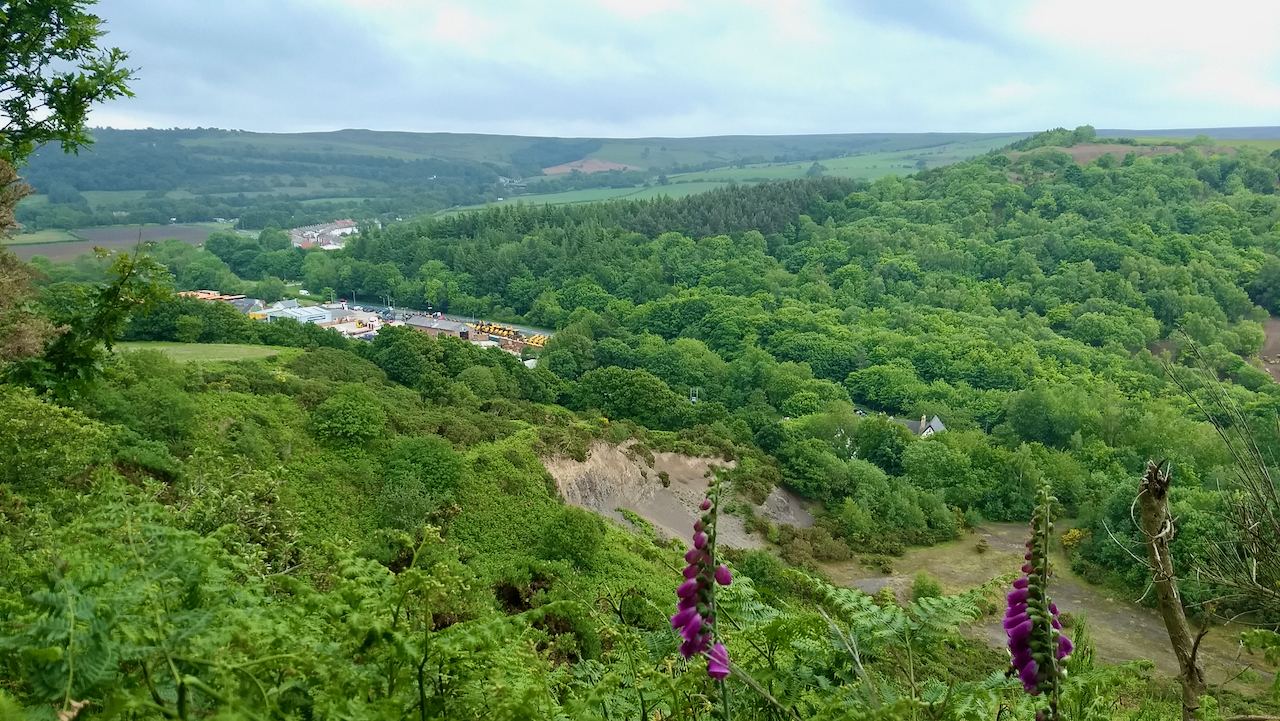Walked a section of the Cleveland Way on a cloudy day with several showers. After crossing the A171 at Slapewath the route toils up Springbank around the huge bowl of Rock Hole, the remains of a 17th-century alum quarry. After 400 years some of the shale sides of the quarry noticeably haven’t reverted back to nature.
The alum shale, laid down 186 million years ago in a warm tropical sea, was burnt and treated with potash, obtained from seaweed or urine, to produce potassium and ammonium and sulphate salts. The finished product was principally used as a mordant in the tanning industry. The chemical had been known since antiquity but by the Elizabethan era, its production was controlled by a papal monopoly with the actual process being a closely guarded secret.
Sir Thomas Chaloner is usually attributed in establishing the alum industry in England. After a visit to the Papal Alum Works in Italy, where he noticed rocks similar to on his lands in Guisborough, he began to experiment with a view to copying the process. He is said to have bribed two workers to come with him to England for which he was excommunicated by the Pope. But despite the intrigue the secret still eluded him. The alum had to be crystallised from the liquor which had to a specific density. Too low or too high and the crystals would be impure. It turned out the secret was an egg, an ordinary chicken’s egg, which began to float just at the right density when the pure alum crystals formed.
However, although the credit is usually given to Chaloner, Robert Bell Turton in his 1938 book “The Alum Farm” suggests it was in fact John Atherton of the Skelton Estate who first produced alum at this Rock Hole quarry in 1604.
The industry continued off and on for 200 years until a method of synthesising alum chemically was discovered. It could be said that this was the start of the Teesside chemical industry.
[Ref016]

Leave a Reply